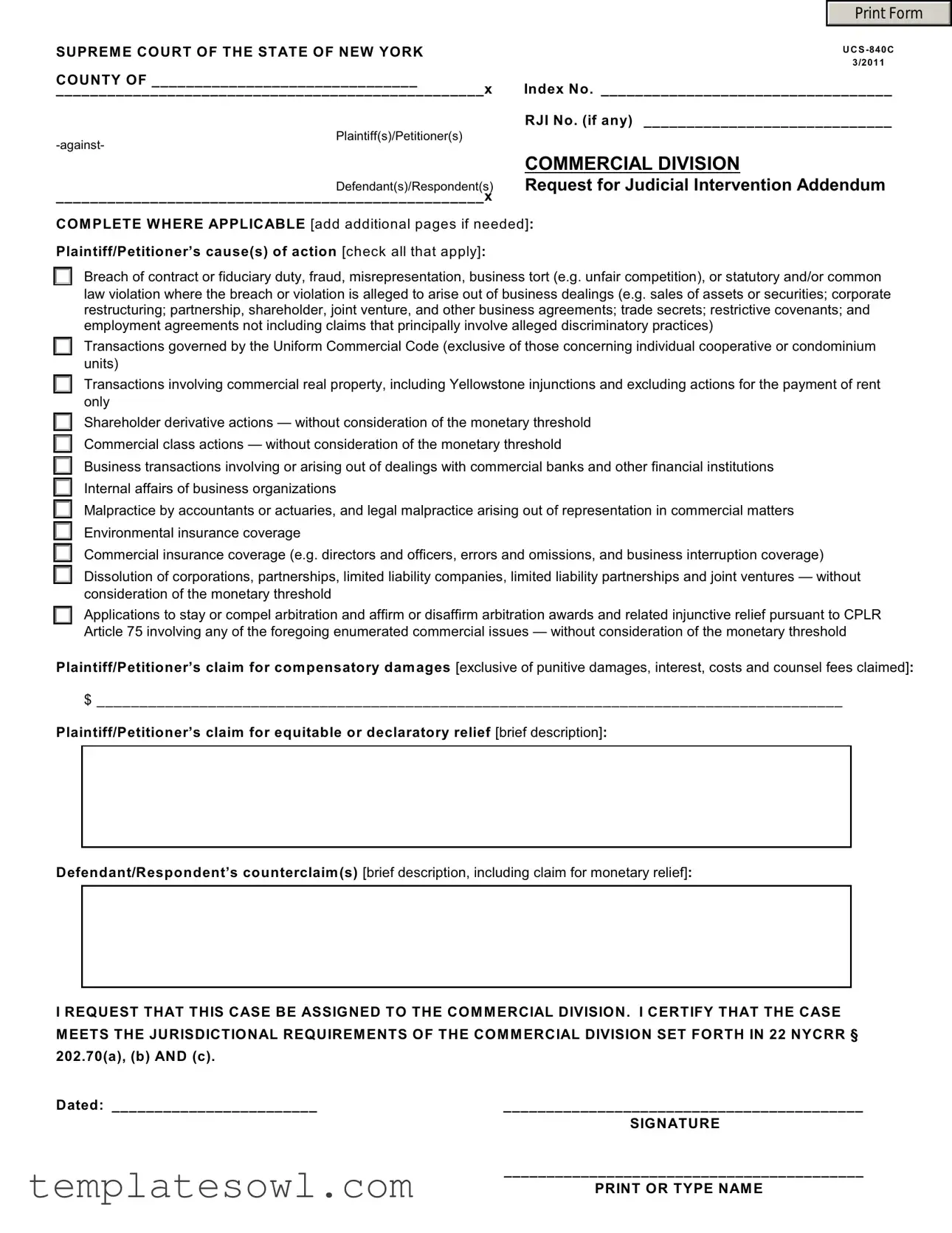What is the UCS-840C form?
The UCS-840C form is an addendum to the Request for Judicial Intervention in New York’s Supreme Court. It is primarily used to specify details about the case that falls under the Commercial Division, ensuring that the court has the necessary information to proceed efficiently.
When should I use the UCS-840C form?
You should use the UCS-840C form when you are filing a Request for Judicial Intervention in a case related to commercial matters. This includes issues like breach of contract, fraud, commercial transactions, and business torts. If your case meets the jurisdictional requirements of the Commercial Division, this form is essential.
What information do I need to provide on the UCS-840C form?
On the UCS-840C form, you need to provide your county, the index number, the names of the parties involved, and specific details about the nature of your claims. You will also indicate any counterclaims from the defendant or respondent and the types of damages or relief you are seeking.
Who should fill out the UCS-840C form?
The party filing the Request for Judicial Intervention, typically the plaintiff or petitioner, should complete the form. It’s important that all information is accurate and reflects the details of the case.
Is there a filing fee associated with submitting the UCS-840C form?
Yes, there may be a filing fee when you submit the UCS-840C form as part of your Request for Judicial Intervention. The fee amount can vary, so check with your local court for specific details on fees and payment methods.
What happens after I submit the UCS-840C form?
After you submit the UCS-840C form, the court will review it to ensure it meets the jurisdictional requirements of the Commercial Division. If everything is in order, your case will be assigned to the appropriate division, and you will be notified of any further steps in the judicial process.
Do I need to attach additional pages to the UCS-840C form?
You may need to attach additional pages if you require more space to provide detailed descriptions of your claims or counterclaims. Be sure to label these pages clearly, so the court understands their context.
How do I certify that my case meets the jurisdictional requirements?
By signing the UCS-840C form, you certify that your case meets the jurisdictional requirements outlined in 22 NYCRR § 202.70(a), (b), and (c). Ensure that you verify your claims align with these requirements before signing.
Can the UCS-840C form be filed electronically?
In many cases, the UCS-840C form can be submitted electronically, depending on the local court policies. Check with your court’s website or contact their office to confirm if electronic filing is an option and how to proceed if so.
What if I make a mistake on the UCS-840C form?
If you spot a mistake after submitting the UCS-840C form, contact the court promptly. You may be able to correct the mistake or file an amended form, depending on the court’s rules. It’s crucial to keep your information accurate to avoid delays in your case.

